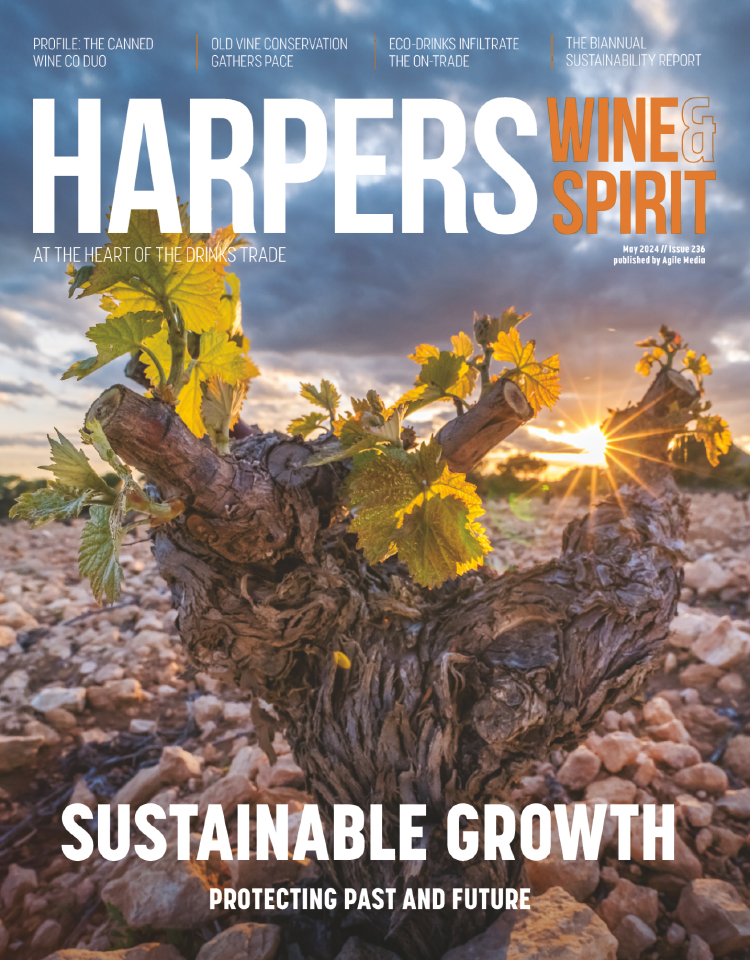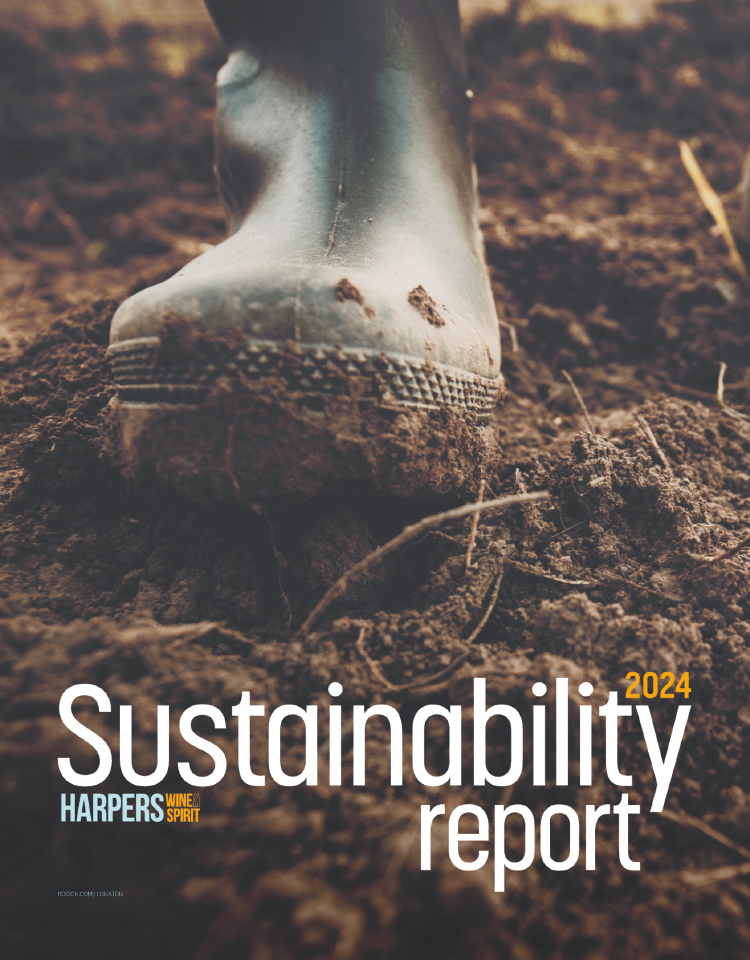Watch fizz space
When faced with the juggernaut that is Champagne - complete with the biggest marketing budgets in the wine world, ultra-slick PR teams and profit margins that would make most producers dance naked through their vineyards - it is easy to forget that more than half the fizz drunk in the UK doesn't hail from northeast France.
If you look solely at volume sales in the off-trade, Champagne, with 30.7% volume share, doesn't even reach the top of the podium, but is sandwiched by Cava, with 38.4%, and Italy with 12.5%. The value share is, of course, firmly in favour of the French, as are sales in the on-trade, by almost 10% in both value and volume (all figures for the year to end of December 2005).
Nevertheless, according to the latest AC Nielsen off-trade figures (MAT to 22 April), sparkling wine sales are stretching their category dominance over Champagne, growing at 7% in volume terms as opposed to Champagne's 4% uplift. According to Tesco's Kevin Smith, Sparkling wine sales overall are very robust, currently showing double-digit growth.'
At a time of ever-increasing margin pressures for still wines (and a category slow -down apparently on the horizon), the sparkling wine market is looking increasingly attractive - high value and growing strongly. The average price of sparkling wine last year was 4.74, almost a pound higher than that for still wine, and even after taking the higher production costs into account, it represents a good profit opportunity. If the future's bright (and bubbly), where, then, is growth going to come from and who, if anyone, is going to eat away at Spain's lead with Cava?
Spanish giant
In a country where a fragmented wine market still operates - with no wine-producing country commanding a share of 30% or more - Spain's dominance of the sparkling wine market is nothing short of incredible. According to Nielsen, Spain commands a share of 53% by volume and 48% by value, and unlike most Old World products it has sustained momentum despite a prolonged attack on its market share - last year it lost just 0.5% and grew its volumes by 2%.
Arguably, much of Cava's success is due to the power of its two market champions': Freixenet and Codornu. They may have had a fractious relationship with each other - including a court battle - but their relationship with the UK market remains strong, with excellent distribution through all channels, both off- and on-trade, and massive own-label businesses.
Bill Breen, managing director of Codornu UK, comments: We are having a record year so far, and volumes are increasing. Exports from Spain were 2.4 million cases last year, which is relatively flat, but I think that is to do with sales of own-label Cava dropping slightly. Branded wines did well and people are trading up from the entry level.'
Despite Cava's robust performance there are some increasingly dark clouds on the horizon. Low-margin, low-priced own-label sales still dominate the category (accounting for massive 31% of the total sparkling market) and it has been suggested that sales of Cava have been under pressure since the start of the year and that relative newcomers to the category are seriously biting into Cava's share. What we do know is that Jacob's Creek Brut became the best-selling sparking wine SKU in the UK off-trade earlier this year, jumping over the entry-level Cava SKUs that had traditionally dominated the tables. Is the New World finally making a fight of fizz?
Turning the tables
Leading the New World charge by quite some margin is Australia. As Smith says: There are a lot of new and exciting lines coming in, especially from Australia. We are bringing in a lot more upmarket sparkling wines like Greenpoint Vintage, as well as some ros sparkling wines like Banrock Station White Shiraz Sparkling.'
Although the category is dominated by Jacob's Creek - at 7.99 it sits at a premium level compared to most Cavas, Asti and cheaper New World offerings - which has nine-litre case sales in five figures. Pernod Ricard has set its stall out as the leading New World sparkling wine company with Jacob's Creek, New Zealand's Lindauer, California's Cuvee Napa and a couple of Argentinian fizzes (not to mention its Champagne portfolio and a Cava through Campo Viejo). We've got a fantastic portfolio now and it is showing astonishing growth, with Jacob's Creek and Lindauer showing really good results,' says Adrian Atkinson, wine development director at Pernod Ricard. At the lower prices I think people are starting to find the traditional Cava brands a little boring and the New World provides something different. We only launched Jacob's Creek a couple of years ago and the ros last spring, but the results have been amazing, with each SKU leading its respective category. It shows that there was a gap in the market. We are now going to move the brand up and launch a Reserve at 9.99. Tesco has already decided to list it.'
Pernod's next project is to launch a Montana sparkling Brut priced at 7.99, one pound more than its New Zealand stablemate. It's going to be in a Blanc de Blanc style with at least 80% Chardonnay, which is the opposite to the Pinot-dominated Lindauer. We think they will complement each other well.'
Overall, Australian sparkling wine grew at 23% by value and with an average price of 6.12, the highest in category (except for New Zealand) and some 2 more than the average for Cava.
Despite Jacob's Creek's success, the biggest producer of sparkling wine in Australia remains FGL. Peter Jackson, the new managing director of FGL Wine Estates Europe, seems determined to follow the model already adopted by Pernod: In the UK we see Champagne at the top and Cava [at the bottom], and not a lot in the middle. We see a lot of white space for a premium sparkling, a significant opportunity in the middle. It needs demystifying and "sexing up".'
So what of the other New World countries? California's sparkling offer appears similar to that of its still wines. A lot at the top, such as Domaine Carneros, and a couple of big brands at the bottom, including Blossom Hill, which launched a white and ros sparkling variant last year. Sales doubled last year, but from a very small base, with its market share still at only 3% by volume. The other glaring question is where is Gallo? Nowhere, as yet.
Elsewhere, South Africa remains very much a niche player - despite the critical success for producers such as Graham Beck, South Africa held a market share of only 1% last year with its traditional Cup Classique. Chile sits in a similar position, with just a handful of companies, such as Valdivieso and Concha y Toro, making small amounts for the South American markets. Michael Cox, UK director at Wines of Chile, says: It's something I am encouraging producers to look at. There are increasing amounts of cool-climate Pinot Noir and Chardonnay available so the material is certainly there.' Concha y Toro is quiet about plans it might have, but a sparkling addition to its Cono Sur or Casillero del Diablo ranges would appear of value.
According to Tesco wine buyer Phil Reedman, bringing a Chilean or Argentinian sparkler is not currently top of our agenda - as with all new sparkling wines coming through, we like to see them bringing in incremental value to the category as well as bringing something new to the consumer - we don't merely want to bring in new sparkling wines that will cannibalise other New World sparkling wines currently in the category.'
Ros revolution
Of all the trends detailed here, the rise of ros - much like in the still wine sector - is the most dramatic. Sales of sparkling ros rose 64% by value in 2005, and although the relevant figures for the on-trade are not available, there is no reason to suggest that the rise has not been equally dramatic. According to Atkinson, ros now accounts for around 15% of the total sparkling market. Four of the top 10 ros SKUs in the off-trade posted triple-digit growth rates by value in the year to 25 March 2006. Beringer Sparkling Ros - on the back of new listings and a massive summer sampling campaign at popular concerts around the country - posted a 360% rise in volume sales, putting it in second place, with a 12.4% share of the market, slightly behind Jacob's Creek ros with 17.9%. Lindauer ros also posted good figures, growing by 54% by volume last year.
As Atkinson says: We have an impressive 28.7% value share of the ros market. Add Cuvee Napa Ros and the just-launched Gran Campo Viejo Cava Ros and we should be nudging up to a third of the sparkling ros category. This is particularly impressive given that own-label Spanish accounts for another one third.'
Italy calling
So what of Italy, traditionally the third-largest supplier of sparkling wine to the UK market? Not much, if the figures are to be believed, with the figures for 2005 showing a 2% volume sales drop and value sales level. If you scratch beneath the surface, however, things are starting to look bright, particularly in the on-trade (although reliable country-specific figures prove elusive). Anecdotally, it appears that entry-level Asti sparklers are in slight decline. Prosecco, however, is another story. According to Iain Muccogh, buyer at Bibendum, the introduction of respected Prosecco producer Bisol to its portfolio has been a revelation. As he explains: We did a lot of tasting at the 2004 Vinitaly to find Prosecco, as revamping our Italian range was a focus at the time. Bisol was a shining beacon. In terms of profile it was a perfect fit for Bibendum by matching our vinous values and our ideas for targeted UK distribution, although I never expected Prosecco to become such a hit. Where price-led, thin and "hold-your-nose-and-swallow" brands dominated, on-trade buyers thrilled with the appeal and softness of Bisol versus other sparkling contenders, mainly Cava. We launched mid-2004 and recorded unprecedented sales across a broad range of customers, we moved to a steady flow of full-load container shipments by the same time in 2005.'
Cavit - one of the few real brands from Italy in the still wine sector - has also targeted the UK recently and launched a sparkling wine. Cavit Lunetta is to be launched initially in the on-trade through Meridian Wines, with relaxed' restaurants and upmarket pubs the target audience. According to export manager Claudio Gambarotto, It already does well in Germany and the US and we think the time is right for the UK consumer to embrace Prosecco. We did some consumer research prior to launch and Prosecco has a low profile in the UK. Not many people know what it is, which is why we think the on-trade is good place to start building the brand. Prosecco is fun, its light and it's refreshing. We are also very good value; Lunetta is designed to sit at around 13 on a pub wine list.'
The public's appetite for Italian fizz is exemplified by the success of PLBs's Bosca Tosti Asti, which has raised the bar in the Asti category with the launch of a varietally labelled Sparkling Pinot Grigio at 5.99. The success of the brand - which racked up sales of 30,000 nine-litre cases in Sainsbury's and Morrison's in its first year (with limited promotional support) - has led to PLB launching a ros addition to the range, again a Pinot Grigio, at the slightly higher price point of 6.49.
As PLB's Alex Canneti says: We are hoping to sell 60,000 to 70,000 between the two lines this year, which is very good for a sparkling wine that is neither a Champagne nor a Cava. It's a fantastic product and people just love bubbles at the moment.' And so say all of us.






